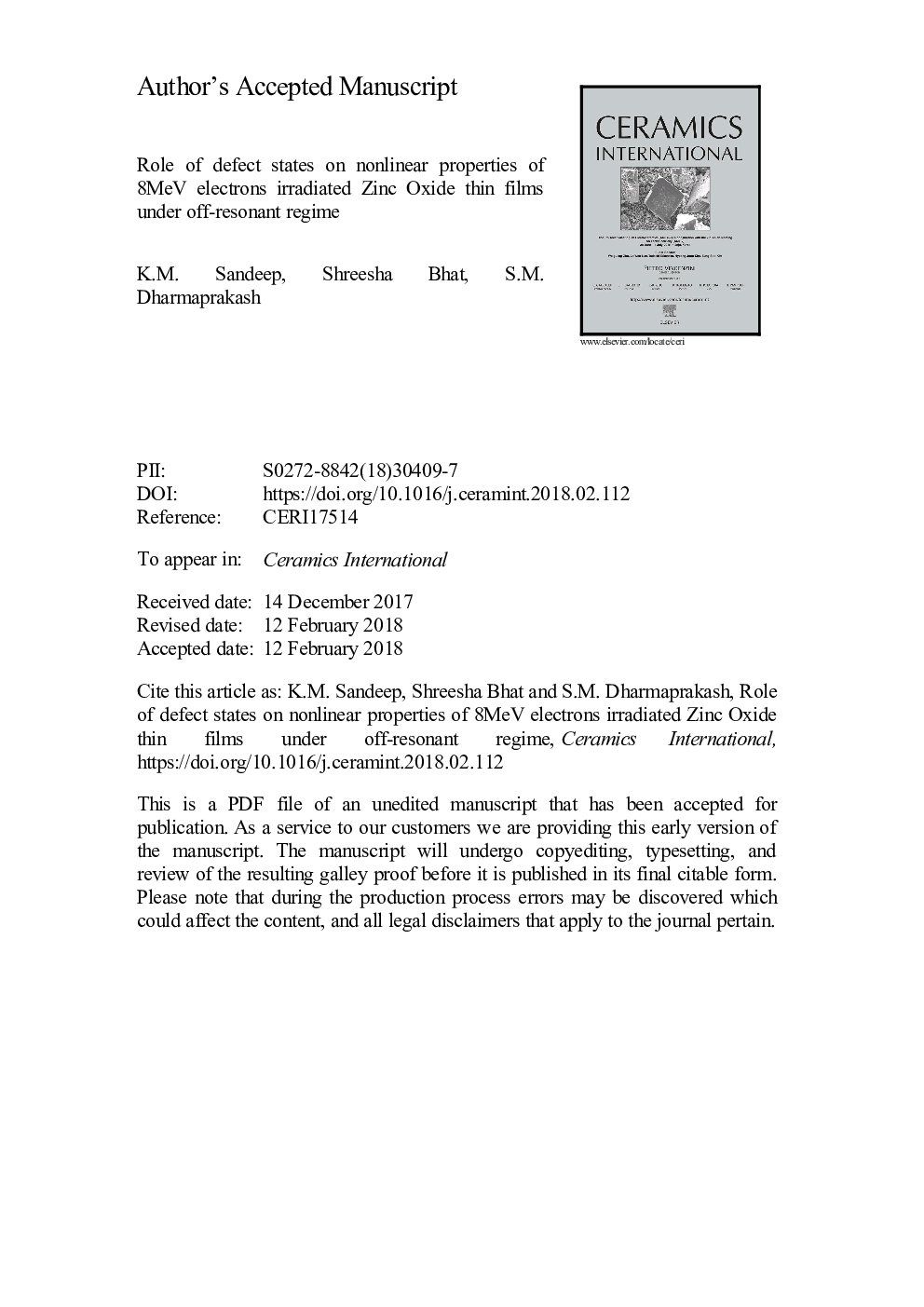| Article ID | Journal | Published Year | Pages | File Type |
|---|---|---|---|---|
| 7887550 | Ceramics International | 2018 | 28 Pages |
Abstract
In the present work, ZnO thin films were synthesized by sol-gel with subsequent spin coating on corning glass substrates. To understand the variations in the structural, optical, and nonlinear optical properties of ZnO thin films, 8â¯MeV electron irradiation with different dose rates (0â¯kGy, 1â¯kGy, 5â¯kGy, and 10â¯kGy) was performed. The XRD spectra showed transition from polar crystal growth orientation to non-polar crystal growth orientation of the films when the irradiation dose rate was increased from 0â¯kGy to 10â¯kGy and this was attributed to the reduced thickness of the irradiated films. The generation of localized surface states below the conduction band upon electron irradiation was confirmed by the quantification of the Urbach energy. A large band gap shrinkage was observed in the irradiated films (3.31-3.10â¯eV) due to the enhanced surface states. The photoluminescence spectra showed reduction in the NBE emission due to the enhanced surface states in the irradiated films. Open aperture and closed aperture Z-scan measurements were performed to extract the nonlinear absorption coefficient (β) and nonlinear refractive index (n2) values using 532â¯nm Nd:YAG laser having pulse width of 7â¯ns. The open aperture Z-scan profiles of the films showed the presence of normalized transmittance valley, which was attributed to the two photon absorption (TPA) behaviour. The reduction in the depth of the normalized transmittance valley in irradiated films was ascribed to the bleaching of carriers in the ground states due to their trapping in the defect states. The closed aperture Z-scan curves showed the presence of normalized pre-focal peak, followed by a valley, which is characteristic of the self-defocusing nonlinear refraction behaviour. The electron irradiation with different dose rates provided an opportunity to understand the variations in the optoelectronic properties of the ZnO thin films considering the various defect states generated upon irradiation.
Related Topics
Physical Sciences and Engineering
Materials Science
Ceramics and Composites
Authors
K.M. Sandeep, Shreesha Bhat, S.M. Dharmaprakash,
